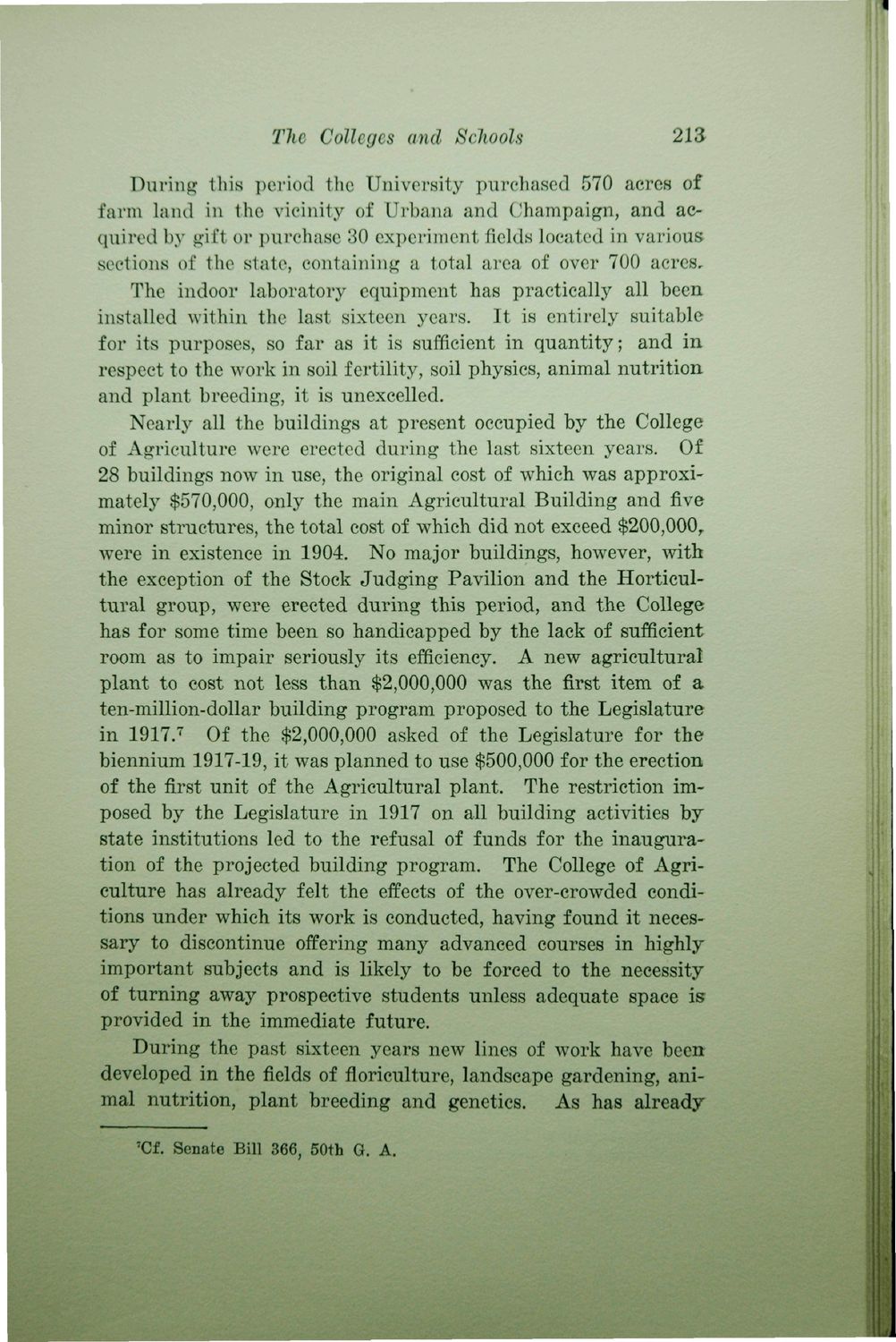| |
| |
Caption: Book - 16 Years (Edmund James)
This is a reduced-resolution page image for fast online browsing.

EXTRACTED TEXT FROM PAGE:
The Colleges and Schools 213 During this period the University purchased 570 acres of farm land in the vicinity of Urbana and Champaign, and acquired by gift or purchase 30 experiment fields located in various sections of the state, containing a total area of over 700 acres. The indoor laboratory equipment has practically all been installed within the last sixteen years. It is entirely suitable for its purposes, so far as it is sufficient in quantity; and in. respect to the work in soil fertility, soil physics, animal nutrition and plant breeding, it is unexcelled. Nearly all the buildings at present occupied by the College of Agriculture were erected during the last sixteen years. Of 28 buildings now in use, the original cost of which was approximately $570,000, only the main Agricultural Building and five minor structures, the total cost of which did not exceed $200,000y were in existence in 1904. No major buildings, however, with the exception of the Stock Judging Pavilion and the Horticultural group, were erected during this period, and the College has for some time been so handicapped by the lack of sufficient room as to impair seriously its efficiency. A new agricultural plant to cost not less than $2,000,000 was the first item of a ten-million-dollar building program proposed to the Legislature in 1917.7 Of the $2,000,000 asked of the Legislature for the biennium 1917-19, it was planned to use $500,000 for the erection of the first unit of the Agricultural plant. The restriction imposed by the Legislature in 1917 on all building activities by state institutions led to the refusal of funds for the inauguration of the projected building program. The College of Agriculture has already felt the effects of the over-crowded conditions under which its work is conducted, having found it necessary to discontinue offering many advanced courses in highly important subjects and is likely to be forced to the necessity of turning away prospective students unless adequate space is provided in the immediate future. During the past sixteen years new lines of work have been developed in the fields of floriculture, landscape gardening, animal nutrition, plant breeding and genetics. As has already 7 Cf. Senate Bill 366, 50th G. A.
| |